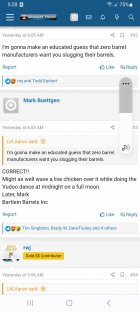The focus of barrel slugging is to substitute a piece of soft lead for an expensive custom air gage which is what is normally used to investigate barrel quality in a well equipped facility. Long ago, folks used soft lead to evaluate bore diameters and so it continues as an art.
The "feel" of the loose or tight spots is what comes out of slugging a bore and it isn't reliable or useful for the fourth digit (inches). Folks will often go ahead and make measurements, but they know those values are risky when discussing ten-thousandths of an inch but still more than good enough to spot issues.
Gilding alloy metal jackets (C21000 but not always) on cup-core bullets are very malleable too, but not like lead. It is roughly 5% zinc.
The advantage of lead is it can be obturated in place using a reverse shaft of wood or metal in the case where it was driven past a middle "tight" spot such that it would then be too undersized for the balance of the test.
With soft lead, you obturate the slug in place so it expands in diameter and you can then continue further down the barrel without a loose slug.
The book by Calfee on rimfire accuracy has some words on the topic if you like to read that sort of thing.
https://www.amazon.com/Art-Rimfire-Accuracy-Bill-Calfee/dp/145679776X
The pressures of firing cycles in firearms and even most air rifles, tends to obturate the bullet. Depending on the context, some amount of blow-by leakage is present. If a barrel diameter is oscillating from tight to loose, or loose toward the crown, nothing good comes from it. So, smiths have always been interested in knowing the quality of a barrel bore before pouring time into it.











